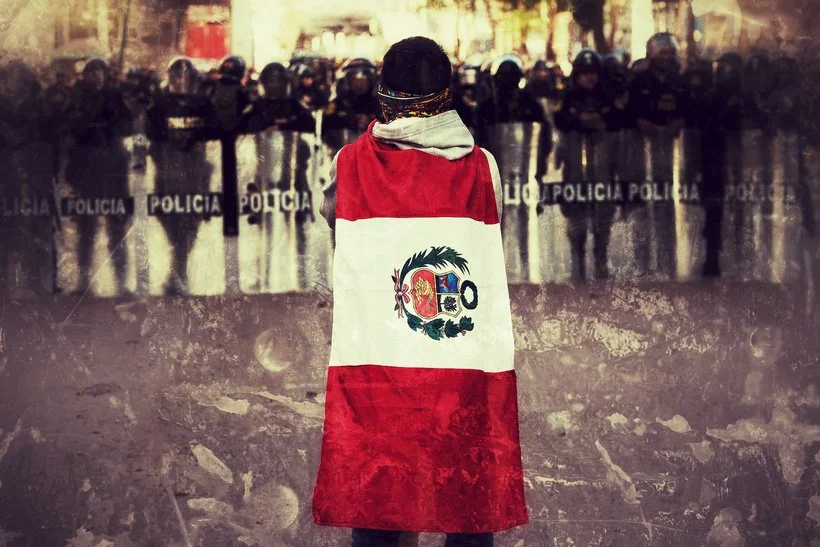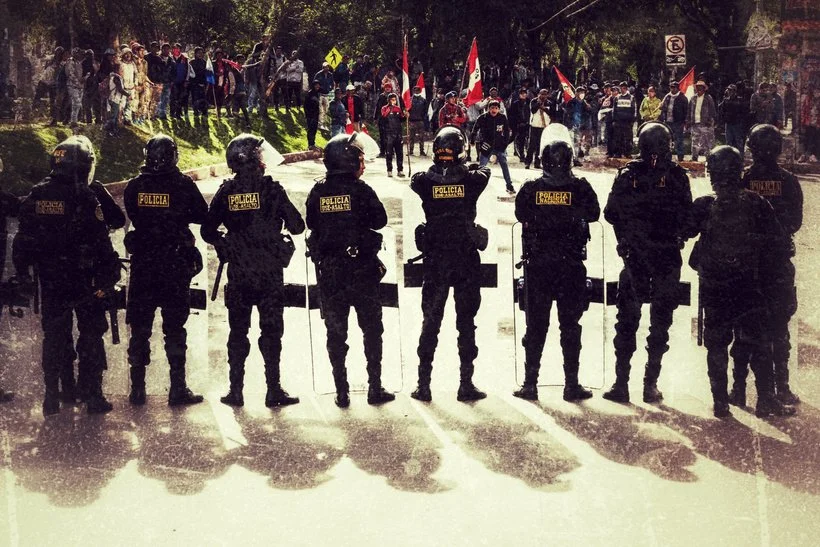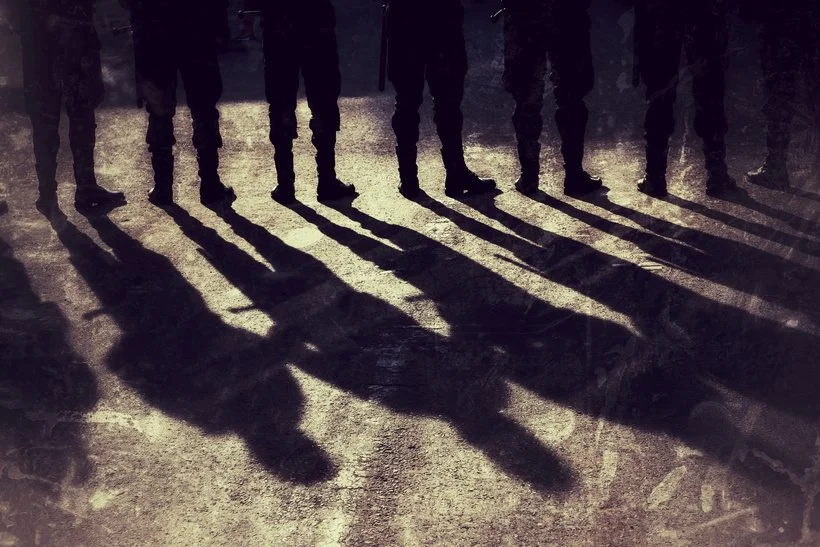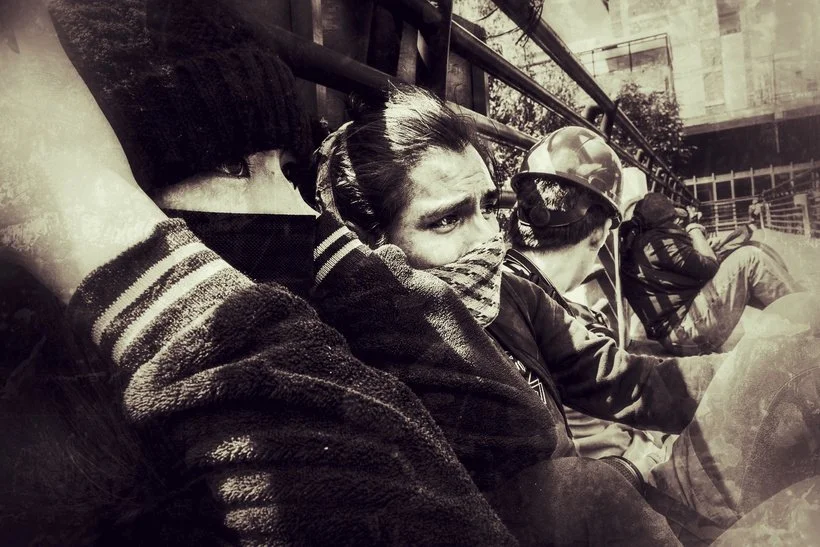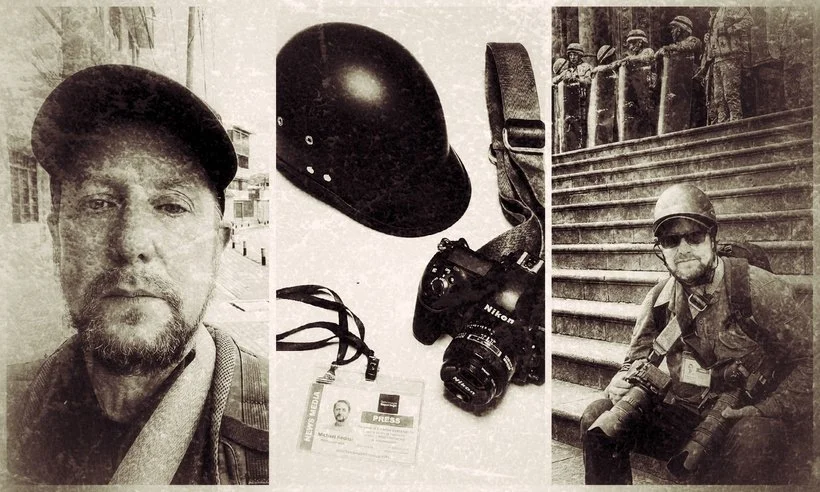Dangers and Challenges
Greetings everyone, and happy Sunday to you.
It feels like Sunday might be the day that I send out an update moving forward. It is the only day that seems to be free of skirmishes or protest marches, giving me a chance to catch my breath and regroup.
It appears that news of what is happening here is reaching a wider audience these days. Things have definitely escalated. I have been asked by many people whether I am planning to leave. The short answer is no.
This is not the reason why I came to Peru but fate has led me to this point. It is a difficult thing for me to explain, but I feel a deep sense of obligation to bear witness to and document what is happening as a photojournalist. There have definitely been moments of doubt, but for now, I stand fast in my commitment.
The challenges and dangers I am facing seem to be the central theme of the questions I am receiving. So I might as well answer the inquiries collectively.
Yes, it is dangerous and there are many challenges. There is a massive amount of distrust from the side of the protesters, and deep disdain from the police. Obviously, this is not from everyone on either side, but those who feel that are the ones that make things precarious for me.
The protesters have a distrust for the media because the majority of tv stations and newspapers in Peru are owned by right-wing businessmen with ties to many in the government that they are fighting against. They feel Peruvian news is biased against them.
Obviously, I am not Peruvian, but there is also a distrust of outsiders. Many people understand that I am there as a photojournalist for international media, and they want me there to get information out. However, there are many that resent me as a gringo and there is some discrimination that happens as a result.
Often I will be with other photographers documenting an event, and I will be singled out, being told not to take photographs. I will regularly get swarmed by a group telling me to stop taking photos and I have to show them my identification and explain why I am photographing. They think I am a tourist, for which there is also some contempt. Worse yet, they think that I am one of the plainclothes police officers that infiltrate the protesters or that I am photographing on behalf of the police to identify protesters. All things that could get me hurt.
Then there is just the fact that my gear is worth a lot of money in a poor nation amongst people that are angry and who see an opportunity. There is a small number of protesters who are there just because they are looking for trouble and they are the most dangerous.
From the side of the police, they don’t want what they are doing documented. I am convinced that there have been fewer deaths in Cusco because there are more international eyes present.
I had an incident last week where I am quite sure, had I not been there, the police would have physically assaulted a small group of people. I came along just at the right time and documented the whole thing and the police retreated.
Police resent the press and have targeted them, shooting one photojournalist, injuring others, and harassing many more, including myself. There are so many talented, hard-working, Peruvian photographers doing great work and putting themselves at tremendous risk to do their job. I have such immense respect for them and have made many friends as we worked together and helped one another.
When the battles are on between the police and the protesters, obvious dangers exist. Rocks are flying, tear gas canisters are being launched, batons are swinging and there is the ever-present fear of live bullets entering the fray. On two occasions I have had police officers attempt to accidentally on purpose barrel me over while photographing a skirmish. The sturdy stubbornness of my Slavic-Celtic bloodline serves me well in these circumstances.
Taking cover with fellow photojournalists as rocks are fired at us
I need to photograph both sides of the battle and that presents its own challenges, but the biggest concern is getting caught between the two sides. It happened on one occasion and it was the scariest moment thus far. I and a few other journalists had to hunker down behind a board on an overhead walkway. The protesters had pushed the police back and advanced. They thought we were police and were hurling rocks at us with such force that they were breaking through the board. Then they came up onto the walkway from both sides and yelled at us. I had to follow the lead of my fellow colleagues as I didn’t understand what was being said (there hasn’t been time for Spanish classes). We had to show our ID and were questioned, then told to go with them to the frontline to take photos of the police only and not the protesters. It got pretty hairy for a while.
First time being tear-gassed and gearing up
My first experience of being tear-gassed was harsh but now it has become a regular occurrence. I have learned to deal with it. It has all been a learning experience, but one I feel I am well experienced and trained to do. It is physically, mentally, and emotionally exhausting work that requires me to be alert and sharp at all times.
I now understand why wars go on so long because breaks are needed between battles. Even the photographers who document the battles need to rest. So now I need to recover and prepare for whatever this week brings.
Thanks and see you soon.
MB


